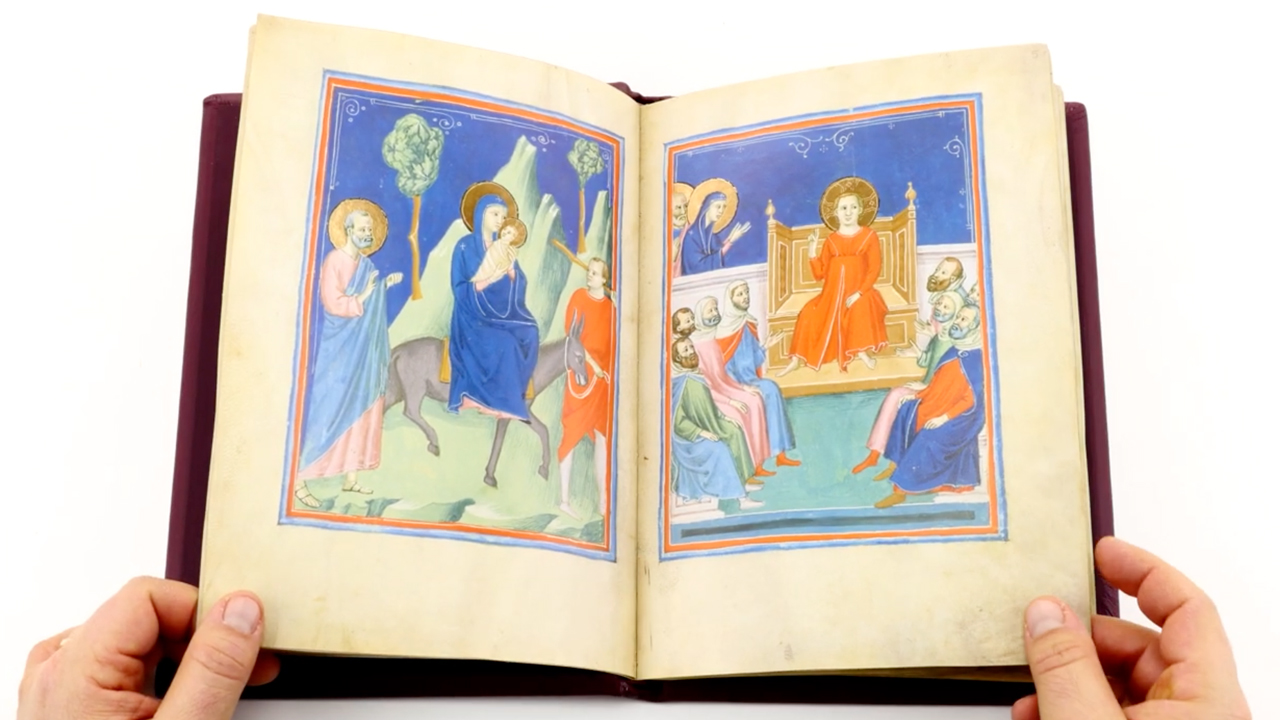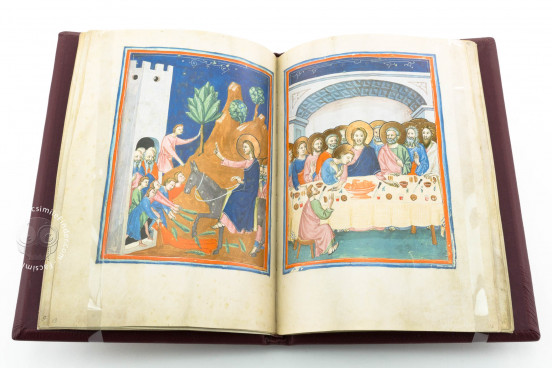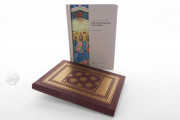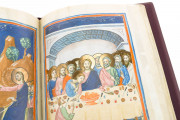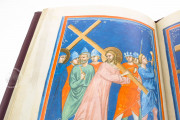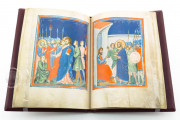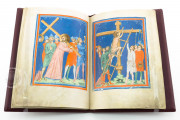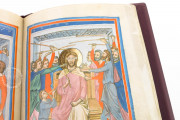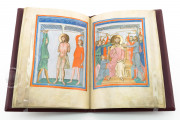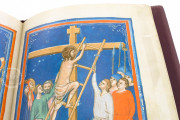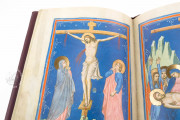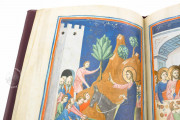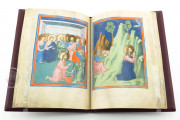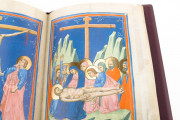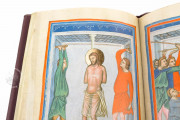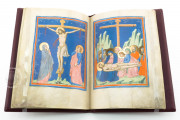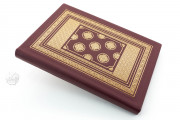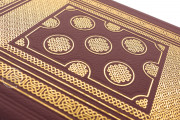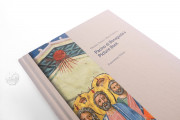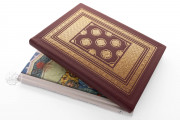Made around 1320, the Picture Book of Pacino da Bonaguida is one of the earliest works attributed to the circle of the Florentine painter Pacino da Bonaguida. The manuscript has no text. Representations of two Old Testament figures bookend thirty-two images from the life of Christ and four miniatures dedicated to five scenes from the life of Gerard of Villamagna (d. 1242), yielding thirty-eight full-page miniatures.
The scenes are set against vivid blue backgrounds framed in orange and light blue. Highlights of gold are used for the large haloes on saintly figures, with those of Christ distinctively tooled to emphasize the inscribed cross.
Pacino da Bonaguida, Illuminator and Panel Painter
Despite a dearth of biographical information and a lone signed work, Pacino da Bonaguida has recently emerged as the subject of significant scholarly attention. The artist is associated with an extensive multi-media oeuvre that comprises manuscript illumination, panel paintings, and stained-glass windows.
The Complexity and Creativity of Florentine Painting
Picture books such as this are uncommon. Its lack of text might indicate that the leaves were originally intended as parts of a prefatory pictorial cycle, perhaps for a psalter, but portraits of Old Testament figures and scenes from the life of a nearly contemporary saintly figure are not common among miniatures prefacing psalters.
The manuscript may have been designed as a picture book and survived as such. It is currently a collection of ten disbound bifolia (two conjoint leaves), which is instructive in clarifying how the book came together, as the paintings of David and Moses were originally on the first and last leaf, respectively (fols. 1v and 20r).
A Telling Technical Detail
The Picture Book's miniatures of scenes from the life of Christ have been linked to a large panel painting dating from the same period that depicts the Tree of Life (Accademia, Florence). Recent scientific analysis has shown that, despite the difference in scale and medium, the artists responsible for both used a very similar (and unusual) technique for painting flesh.
Franciscan Links and a Tuscan Saint
The Picture Book is significant for containing the earliest pictorial cycle of the life of Gerard of Villamagna, a beloved Florentine hermit saint who was also known as the Blessed Gerardo Mecatti. His feast day was celebrated on the Monday after Pentecost, and the two leaves dedicated to his story (fols. 18-19) accordingly follow the miniature of Pentecost.
The images focus on the Blessed Gerard's acts of charity and devotion, and their inclusion helps contextualize the book within the early formation of his cult and might help identify the person who commissioned the manuscript: a person of means with a particular devotion to the saint. Since both the Knights of Saint John of Jerusalem and the Franciscans claimed him as a patron saint, that person was probably associated with one of those orders. Two prominent Tuscan families, the Bardi and Cavalcanti, have been suggested as potential patrons since both are associated with the saint's oratory at Bagno a Ripoli.
Admired by British Collectors
The manuscript was owned by David Thomas Powell (d. 1848); Bertram Ashburnham (1797-1878), Earl of Ashburnham; and Henry Yates Thompson (1838-1928) before J. P. Morgan (1867-1943) purchased it in 1919. Morgan established a public institution for his and his father's collection in 1924, now known as the Morgan Library & Museum.
We have 1 facsimile edition of the manuscript "Picture Book of Pacino da Bonaguida": Pacino da Bonaguidas Buch der Bilder facsimile edition, published by Mueller & Schindler, 2015
Request Info / Price
